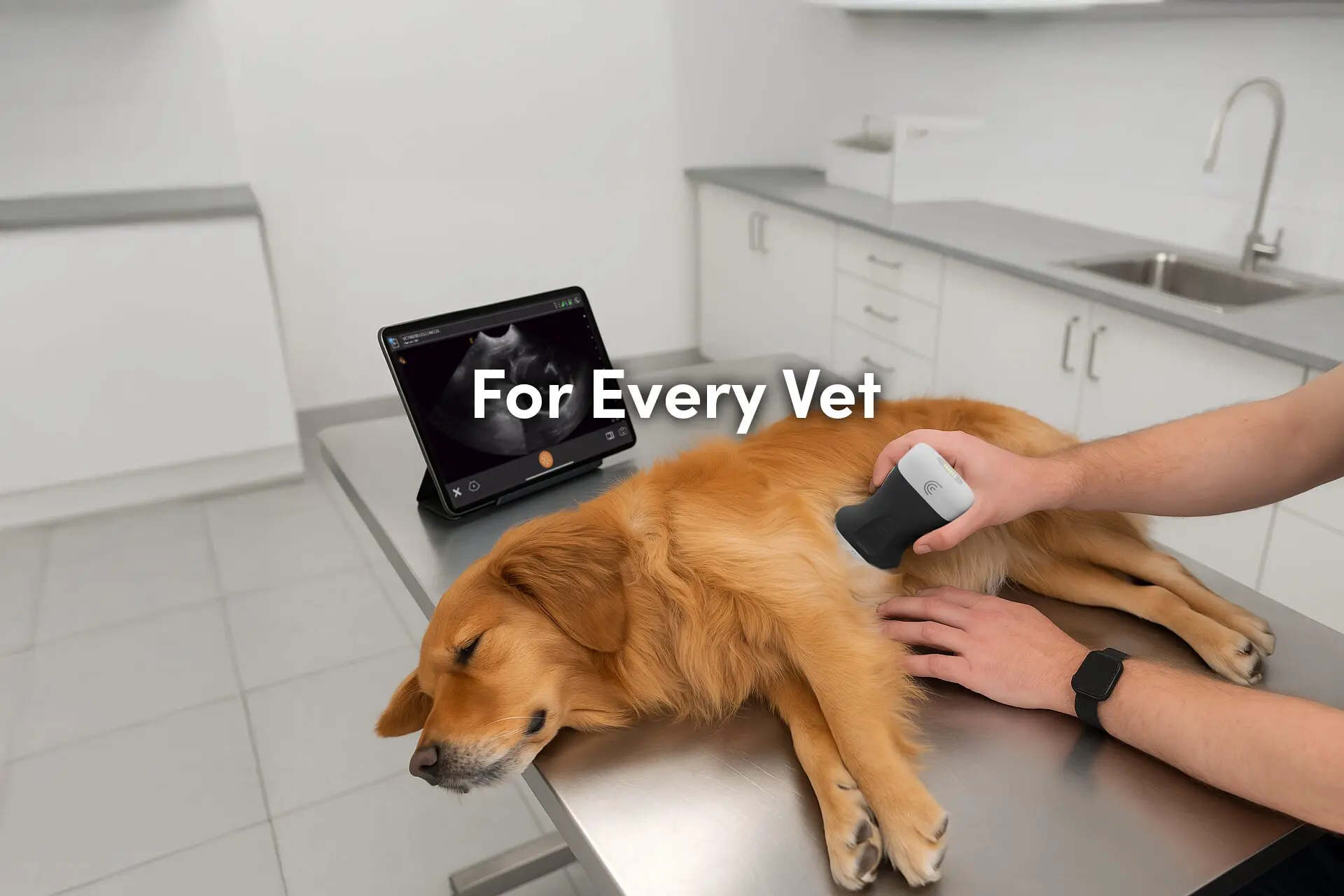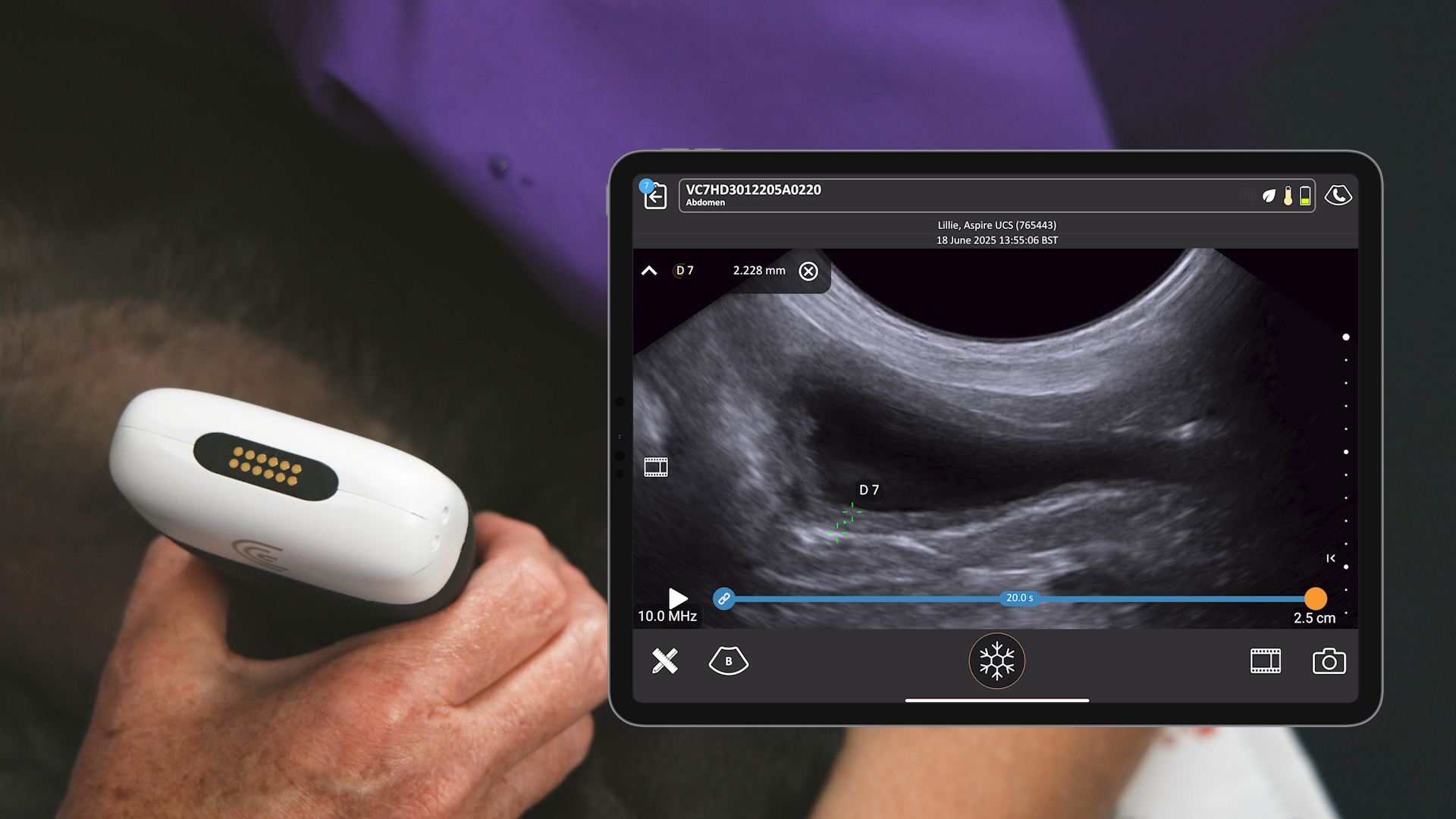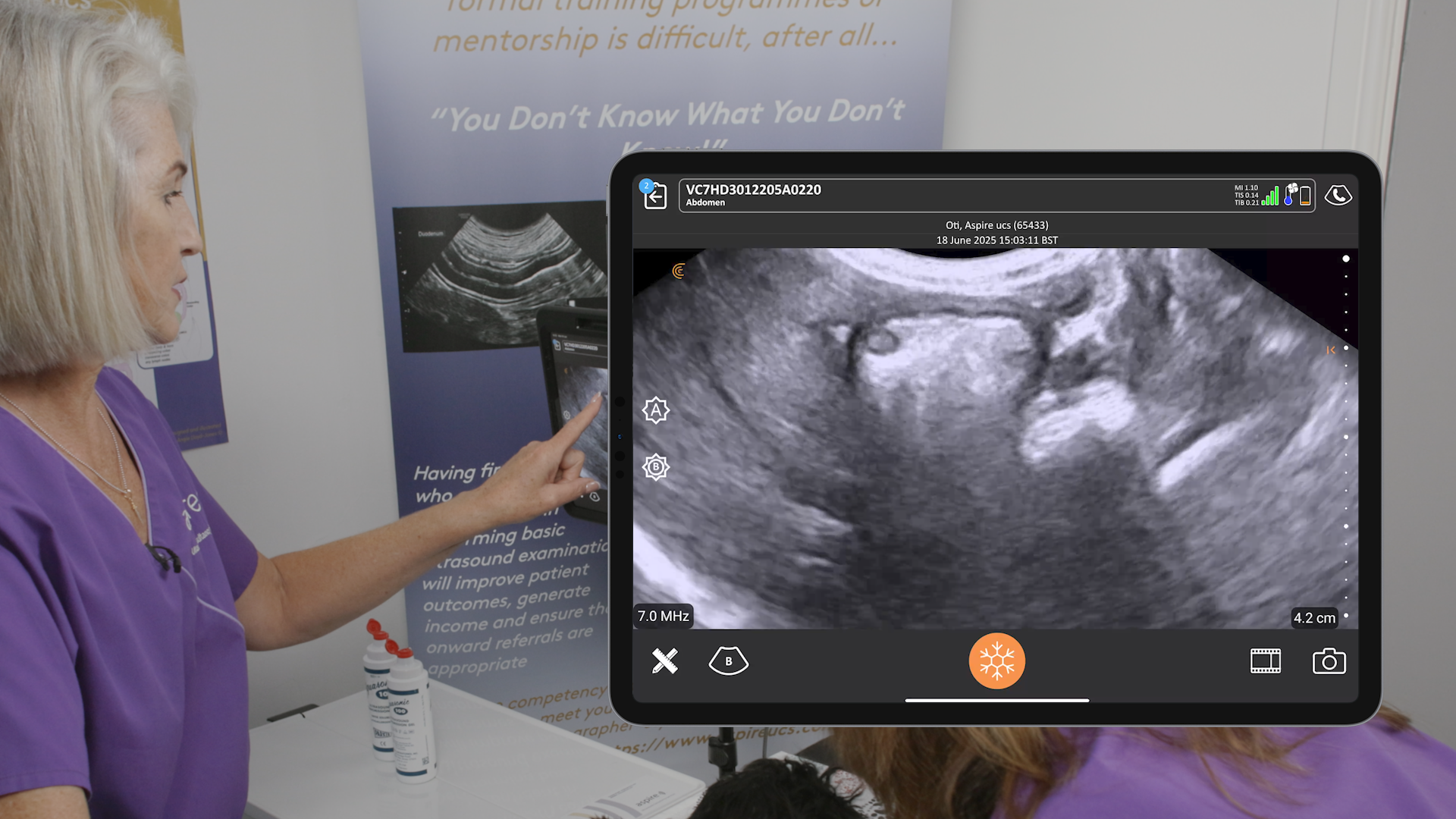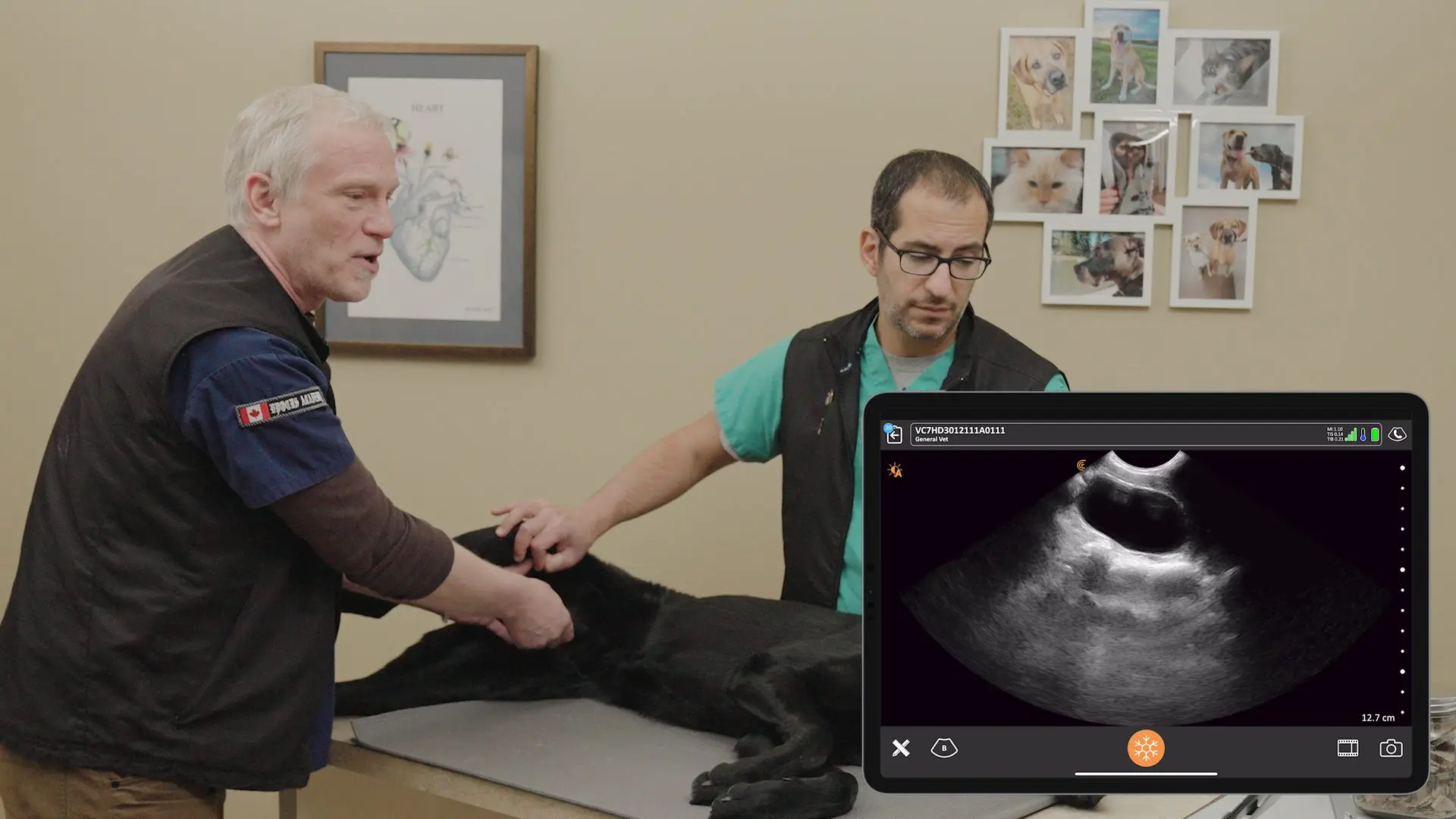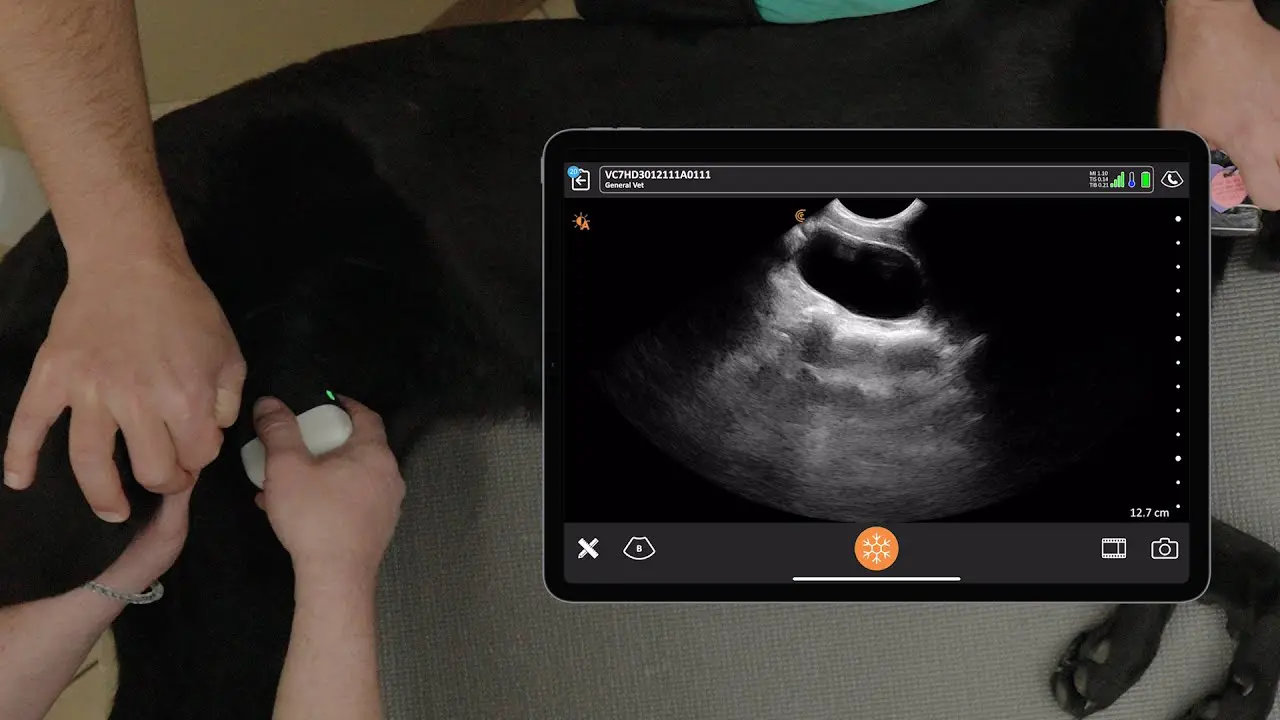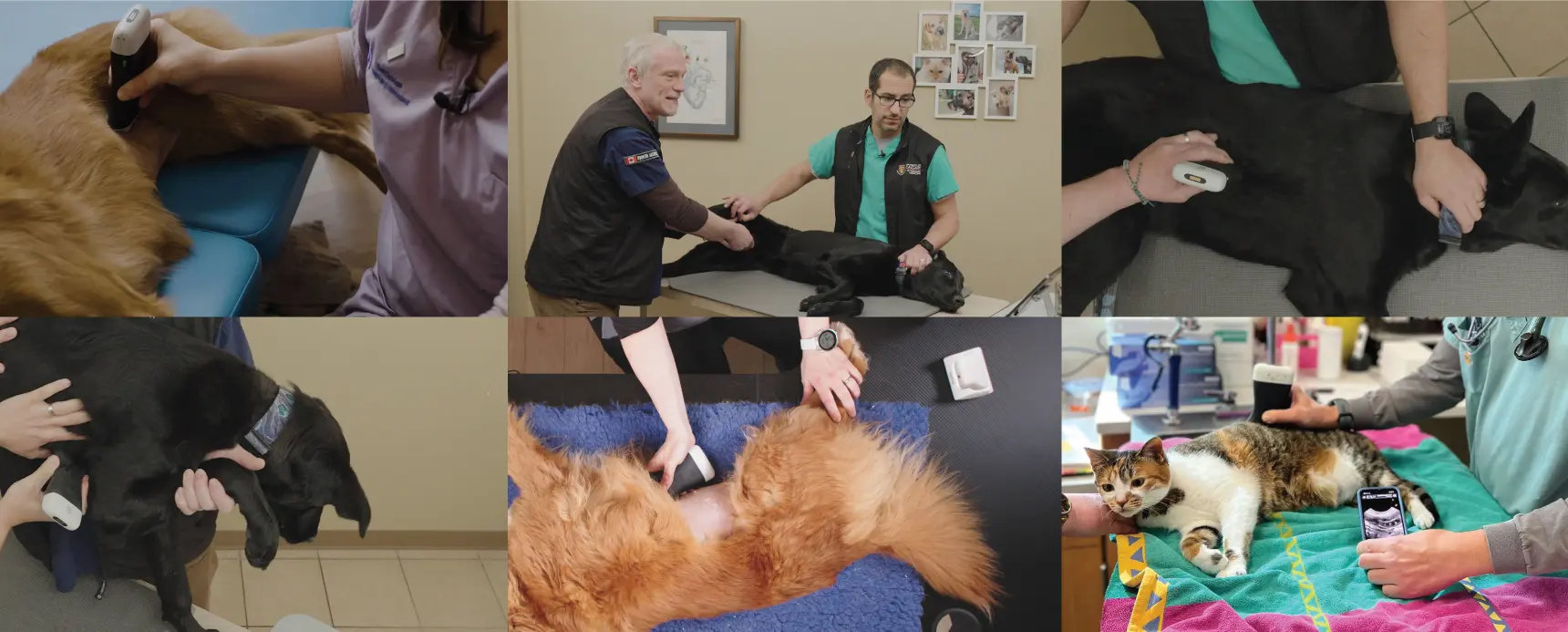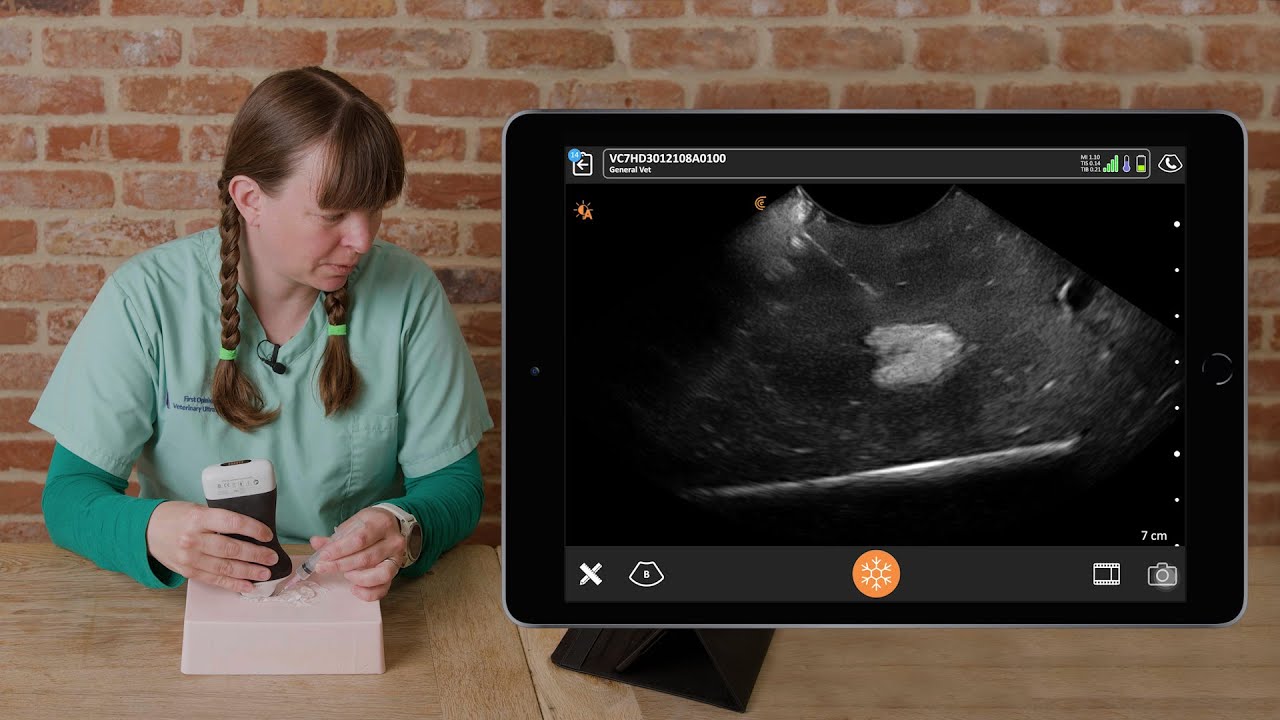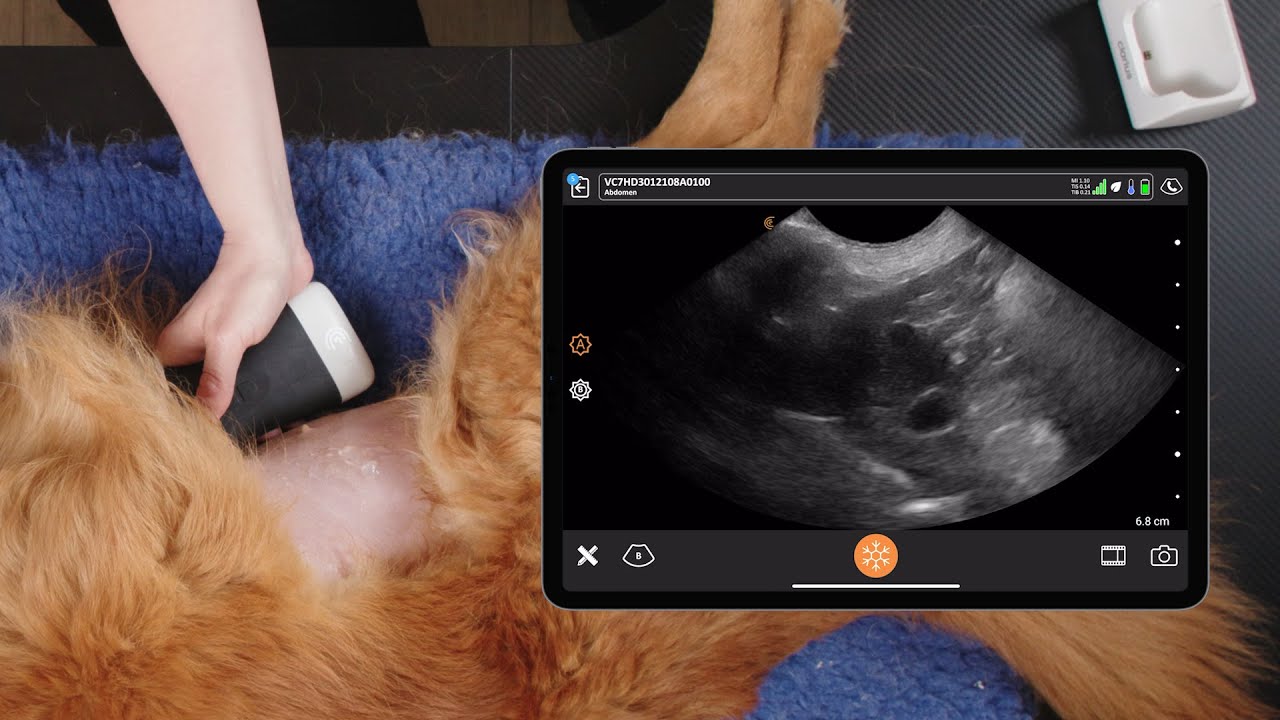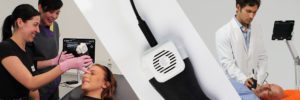The use of ultrasound in small animal veterinary practices has become an essential imaging tool. Miniaturization, improved resolution, and lower cost of ultrasound systems along with specialized vet scanners and presets enable veterinarians to easily image the bladder in their furry patients who present with urinary symptoms.
We recently partnered with Dr. Camilla Edwards of First Opinion Veterinary Ultrasound to present a webinar, “Practical Small Animal Ultrasound Kidney and Urinary Bladder Point-of-Care Scanning Techniques”, dedicated to ultrasound techniques for canine kidneys and bladder. Camilla is a peripatetic veterinary sonographer who teaches ultrasound with IMV-imaging, Celtic SMR and delivers her own courses. She uses ultrasound extensively in her practice and believes that everyone in her profession deserves to have the skills and confidence to use veterinary ultrasound to help improve diagnosis.
Watch the full webinar to learn:
- Indications for bladder ultrasound
- How to find the bladder using ultrasound
- Scanning tips to ensure a thorough exam
- Pathology
Webinar Highlights
If you don’t have time to watch the webinar, here are some quick tips and a video excerpt on how to scan a canine urinary bladder.
According to Dr. Edwards, indications for scanning the urinary bladder include changes in urination, pyuria, hematuria, proteinuria, and unresolved cystitis. A distended bladder is helpful when evaluating the bladder wall for thickness or masses, and the lumen for sediment or uroliths.
Technique for Scanning the Bladder (Left lateral recumbency if the right kidney was just scanned)
- Caudal abdomen – look from ventral towards dorsal
- Fan through bladder left and right
- Rotate 90 degrees – fan cranial to caudal
- Dependent view (through the bladder towards the table)
Watch this video to see Dr. Edwards using the Clarius C7 HD3 Vet to scan a canine bladder.
During the webinar, Dr. Edwards shares an example of a dog named Chewy who presents with hematuria. Watch the full webinar for more information about how using ultrasound helped determine the next steps in treatment.
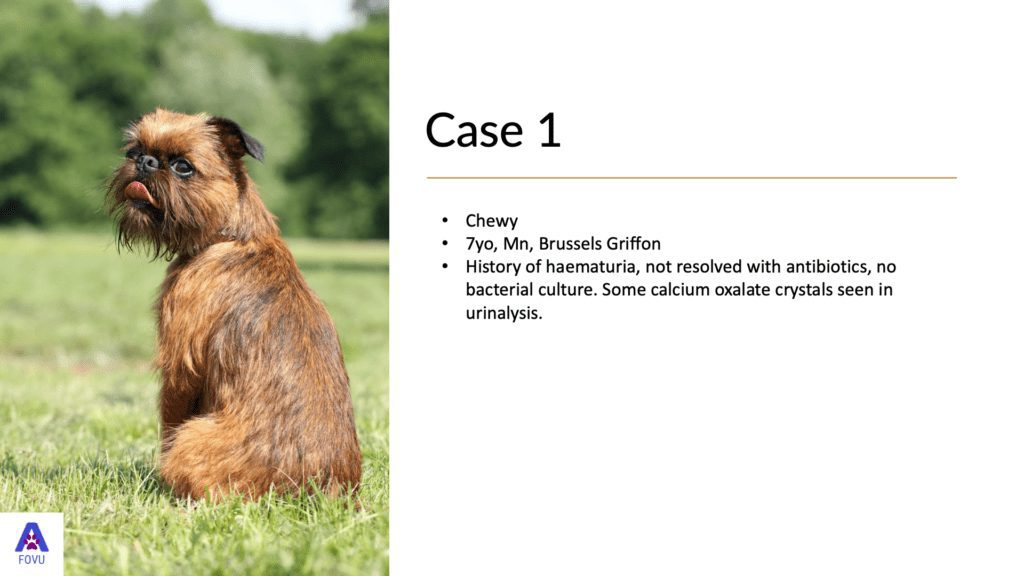
Visit Dr. Edwards’ website for more information about the educational services she provides, or get in touch at [email protected] .
Clarius Wireless Ultrasound for Veterinary Practice
Dr. Edwards uses the C7HD3Vet in her small animal practice. To learn more about how wireless ultrasound can benefit your practice, please visit our Veterinary Specialty Page. You can also access additional veterinary webinars and classroom videos on our website.
To see a personal demonstration of our new smaller and lighter Clarius HD3 Vet scanners contact us today or request a virtual ultrasound demo.
